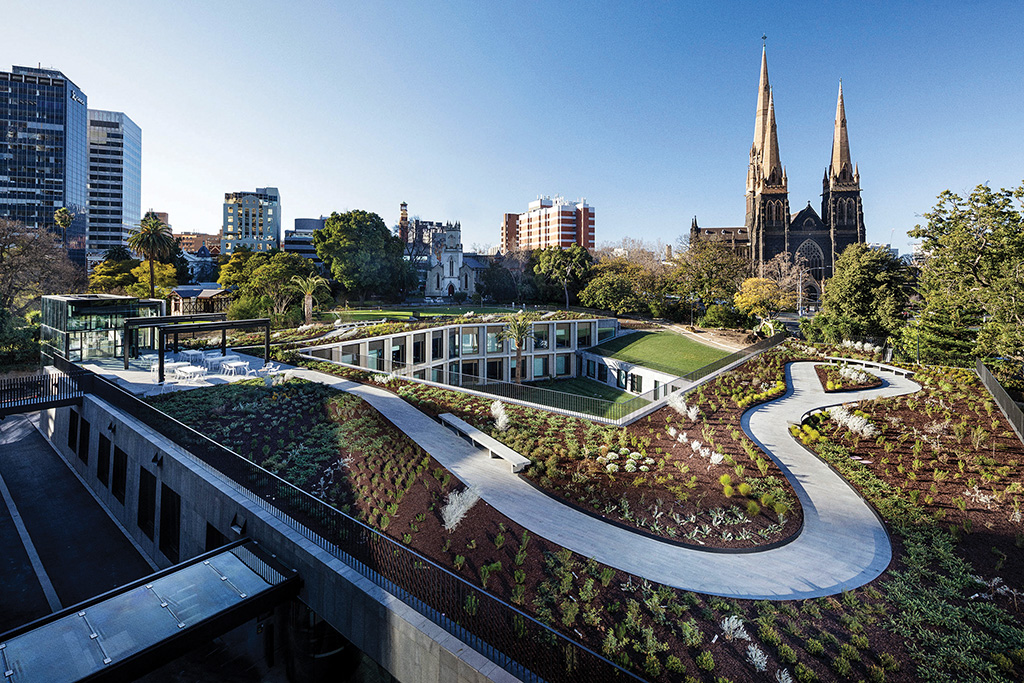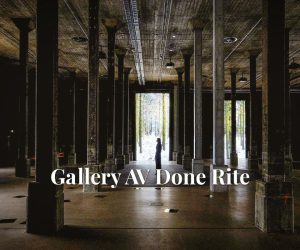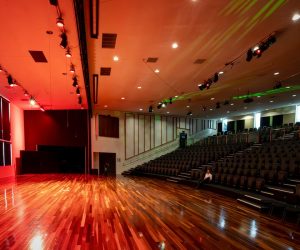
Sitting Pretty
The Parliament of Victoria has a new wing for 102 members’ offices. This is an AV over IP design with bells on.
Text:/ Christopher Holder
The Victorian parliament has a new wing. Like a 4.5-star hotel (designed by Peter Elliot Architecture), each member has a brand spanking new office that looks out to a central garden. It’s neat, unobtrusive and really only required the sacrifice of a lawn tennis court to accommodate.
The new wing needed new AV.
But before we get to that, it’s worth returning to the old parliamentary building (work started back in 1856, and hasn’t really stopped) to understand the new offices.
AV Asia Pacific met with the Manager, Hansard, James Scott, on site on a day when parliament wasn’t sitting.
“Prior to the new members annex being built we had 88 members from the Assembly and 40 members from the Legislative Council all housed in the old building. Back in the 1850s no one could foresee it being a workplace for 128 members, their staff and all the support people. Because of that, over time, offices were shoehorned into places you shouldn’t put people.”
ANCIENT AV: LOOKING BACK
The old building has some old AV.
The old rack looks somewhat like one of the Telecom totems you occasionally see unsheathed on the nature strip. A mass of copper strands, like tendrils, reach across the old site. No one knows exactly where they all end up but the team is nursing the setup until the next round of improvements sees the old system phased out.
“I feel like a caveman seeing TV for the first time. I don’t know how the old AV rack works, so it’s like magic. We revere it, pray to it, and periodically we need to sacrifice replacement amplifiers at its altar to keep it running.” James has the look of a man only half-joking.
GO LIKE THE CLAPPERS
If you drill down deep enough to the dark ages of AV, you’ll find evidence of mid-century division bell technology.
The division bell is rung whenever legislation is brought to the vote. All members of the house (lower or upper, depending on the vote) are called to enter the chamber and participate. Nothing is more important than the division bell. It doesn’t matter if you’ve just been phoned by Donald Trump, the Dalai Lama or even your mother-in-law, when the bell rings, you hotfoot it to the chamber.
That being the case, there’s not a square foot within parliament where you can’t hear the division bell.
Back in the day, actual bells were installed throughout the building (some of these remain in use). There was a button in the chambers which would trigger a blast of AC to the bell clappers. In time, a red and green light was added to the unit to signify for whom the bell was tolling — upper or lower house.
It’s impossible to stress enough just how important the division bell is. Missing a division could be worse than missing 10 wedding anniversaries in a row.
“Getting the division bell right in the new members’ annex was important,” noted AV consultant, Parity’s Andrew Hicks, with some understatement. Parity was appointed as AV consultant and worked with the Victorian Parliament on developing and documenting
an audiovisual standard for this work and future upgrades.

CLEAR AS THE BELL
Little did Andrew know that so much of his time would be spent on bells. The 21st century division bell has moved with the times, but not so much that you can get cute with it.
“We sampled the sound of the bell,” continued Hicks. “It’s important the bell, regardless of whether you’re hearing it in the new wing or the old house, sounds the same. There are 102 offices for 102 members. Each has their preferences for how they would like to hear the division bell.”
Those preferences don’t extend to turning the bell off. You have three level settings for each of the chambers. If you’re a member of the lower house you can’t mute the upper house bell because you may have an upper house member in your office when the bell goes off.
The bell will duck the level of the audio from the chambers if you have it on.
You can make these adjustments via a neat little wall plate controller. In fact, the BSS wallplate won the vendor the DSP contract. There are four primary BSS London DSP units in the rack room and four backups. Each of the 102 rooms is its own audio zone.
ONE-CABLE PROMISE
The Dante audio is routed to the offices via the IP network and Cisco switches. At an endpoint is a SoundTube IPD series PoE in-ceiling speaker — one per room. The six-inch SoundTube speaker accepts Dante natively: just plug in the RJ45 connector. And being PoE, no other cables are required.
To be precise, the SoundTube speakers are HPoE — higher power than PoE or PoE+. So if standard PoE provides 15 Watts and PoE+ is 25W, then high power PoE is more like 40 Watts. “In our test the 15 Watts of power from PoE was sufficient in the members’ offices given the environment,” recalls Andrew Hicks. “Saying that, you have to load share the power requirement, so we had to add a second power supply to each of the network switches as well as mixing the devices.”
There are nine network ports in use in every room, (“eight would have been handy when you have 48-port switches!” observes James Scott wryly) which includes a PoE clock. “We thought there’d be plenty of PoE clock designs to choose from. Not so — we had to design this one ourselves,” reports James Scott.
The clock remains remarkably stylish despite being designed after ‘extensive consultation’. As mentioned, it’s powered over the ethernet, receives its timing updates via the network and features red LEDs on the top of the face and green LEDs at the bottom to signify which division bell is tolling.
“102 offices for 102 members. Each has their preferences for how they would like to hear the division bell”

IPTV & MORE THAN IPTV
The other big piece of the AV fitout is IPTV.
Each new office has a 48-inch commercial display (a NEC V484, specifically for its low reflections), with another 38 dotted about, each capable of displaying free to air, Foxtel or Parliamentary TV. The Exterity IPTV system also manages any digital signage content parliament wants to push to those screens. Each screen has an Exterity IPTV set-top box (STB), with a remote to control the STB and display.
As it turns out, James Scott’s first parliament gig in 2009 was to set up the broadcast AV network (his first job back in Australia after a stint in the US broadcast sector). “Today there are a number of broadcast feeds of both houses and an audio-only feed. There’s a video-on-demand service, where we can push content to the NEC displays or even to members’ mobiles or desktops. The webstreaming is managed by Akamai. All this is on the Parliament network and managed by the Exterity IPTV system.
“It’s been a big IT job and they really stepped up. We now have technical support in-house, which means we don’t always have to escalate issues to Exterity or Cisco.”
Here’s why Exterity won the day. Where other IPTV systems purport to be ‘more than IPTV’, Exterity is proving it can be a one-stop shop for delivering, recording, managing and scheduling network-based content.
BENDING TO THE WILL OF CAT7
Apart from a smattering of Quest 100V line ceiling speakers, every item of AV in the new members’ annex is on the 10Gb network. Cat7 (shielded) wins the day. Actually, it’s Cat7’s bend radius that stands out as a potentially bum-biting fly in the ointment. “We had to be very careful with the bend radius and connection points on the in-ceiling speakers and the wall plate controllers,” recalls Andrew Hicks. “Otherwise the cables could be bent from the recess cavity or the wall construction itself.”
It’s also a happy tale of a collegiate and helpful IT department. I asked James how he got both areas to share the same (converged) network. For example, how were quality of service (QoS) discussions broached?
“One thing we all agreed on: the division bells. At a pinch, we can live without the other stuff. But the division bells? Well, the bells get the highest QoS.”
Ah, yes: the bells! The bells!
CONTACTS
Peter Elliot Architecture: peterelliott.com.au
Parity (AV Consultant): parity.com.au
Fredon (Integrator): fredon.com.au/technology















RESPONSES